Andreas Burzik offers four principles that will minimise the effort and maximise the effects of practising

Every musician knows that blissful feeling of being totally lost to the world, absorbed and effortlessly involved with one’s instrument. All steps of the activity run seamlessly into each other and any sensation of time disappears. There is no room for day-to-day worries; everything is replaced by a deep feeling of well-being and harmony. Action and consciousness have become one and you have achieved 'flow'.
In the early 1970s these wonderful experiences were discovered for the scientific research world by Mihaly Csikszentmihalyi, an American psychologist of Hungarian descent, who explored the creative process of painters and sculptors. In a large ensuing study he interviewed a variety of people in sports and the arts, many of whom described these experiences as a ‘continuous flowing’. This is how he came to name them ‘flow experiences’. In these states consciousness is focused and ordered, allowing the subject to carry out even complex activities with a sensation of intense enjoyment and ease.
Csikszentmihalyi identifies seven elements that make up flow experience. The first three are prerequisites for flow experiences to come about, whereas the following four describe what a person is experiencing subjectively while being in flow:
Clarity of goals and feedback
A tennis players knows exactly what is required in order to win a game: the rules are clear and the success or failure of any move is immediately perceived. Many arts activities and sports demonstrate their own causes and effects in this way, providing the player with constant feedback.
A high degree of concentration on a limited field
This allows one’s consciousness to delve deeply into the activity without distraction. Chaotic and contradictory demands in daily life often cause confusion and dissatisfaction.
Balance between ability and challenge
The level of difficulty of a task has to provide the right degree of challenge; too great a challenge leads to tension, anxiety and frustration; too small a one creates boredom and routine.
A sensation of heightened control
Beware of the expression ‘control’; it can put a lot of people off by its association with compulsive domination or nervous attention. Control in flow has none of these qualities; it is a state of relaxation with the complete absence of worry, the paradox known in Zen Buddhism as ‘control without controlling’.
Effortless of action
Flow involves ease, flexibility, naturalness; things work harmoniously and effortlessly. A solo performance looks strenuous from the outside, yet in fact the player is not experiencing any particular strain. The activity runs smoothly, guided by an inner logic. All necessary decisions arise spontaneously from the demands of the activity without any deliberate reflection.
An altered perception of time
In a deep flow-state one’s normal perception of time is on hold. It seems to stand still; two hours feels like ten minutes. This is because the right-hand side of the brain, primarily used for creative tasks, is activated and both parts of the brain are operating in a largely synchronised way. Any type of analytical, left-hand-brain-type thinking recedes into the background.
The melting together of actions and consciousness
Complete involvement creates a state in which there is no ro0om for worry, fear or distraction. Performers do not feel separated from their actions any more: they are one with their performance.
The following four principles show how the flow concept applies practically to playing an instrument:
Contact with the instrument
Particularly important are the places at which the player actually touches the instrument. We are looking for the most effective transfer of power from the body to the instrument. Such an optimal transfer comes from consciously attuning to the quality of touch. The consistent clarifying and improving of this tactile feeling has a great organising power: the arms, hands and fingers seem almost automatically to fine-tune themselves to the requirements at these decisive sound-forming points. For teaching purposes it is helpful to describe the specific feelings we are looking for at these points.
The first is bow contact, where an optimal connection between right hand and bow conveys an elastic feeling that is neither too stiff nor too fragile. It is gluey, thick, secure and in control regardless of the bowing requirements. Of equal importance is the contact point – the connection between bow and string. Here optimal attunement leads to a feeling of the bow being ‘in’ the string, ‘hugging’ the point of contact, a feeling like stroking a velvety surface or dragging a paintbrush through paint.
The second sensation to locate is that vital place in each of the pads of the left-hand fingertips – slightly different for fast or slow passages or double-stops – through which weight and energy from the arm are best transferred to the string. Seek out this point to allow maximum relaxation in the hand while pressing down the string with a minimum of effort. This will result in a feeling very similar to that gluey one at the contact point: the connection between pad and string feels deep, thick, relaxed and firm.
Sensitised fingertips convey a wonderful, fresh, malleable, even sensual feeling, forming a sharp contrast to a finger merely stopping the strings as though nailed to the spot. Besides greater security of intonation this special quality of left-hand touch has an immediate effect on tone production. A projecting sound originates from the right mix of left-hand finger contact and bow contact. There is a give and take between the hands contributing equally and alternately to create a consistent and continuous sound. Don’t wait for these feelings to come about: establish them deliberately.
Development of a sense of sound
Many musicians play notes, but have an underdeveloped concept of sound. We are preoccupied by speed, dynamics or technical difficulties and can stop enjoying the sound we make. One way to re-sensitise yourself to this important dimension is to tune your ears to the range, amount and quality of the overtones you produce in your playing. Deliberate experimenting with the overtone spectrum lets you experience vividly all the differences in brilliance, projection and volume. This will enable you to find your own unique sound, a sound you really like. Do not try to fulfil any imposed task set by teachers, critics, managers or record producers: follow your own aesthetic desires. Through this you will connect deeply with what you are doing and develop a solid home base, a basic sound feeling from which all colours in music can be explored in a playful way. Being immersed in your own sound world renders you immune to distraction. It creates an intense flow that has the capacity to carry all you do; you feel uplifted.
Feeling of effortlessness
Any movement on the instrument should happen with a feeling of effortlessness. This does not mean complete relaxation or slackness but a feeling in the body of being unstrained, easy and flowing. It’s a sensation of ‘not doing’, of ‘not working’. For some musicians this is not an easy thing, especially if they have deeply internalised concepts of how to treat their instrument. But when they reach a relaxed state and a sensitive attunement to their instrument the sound starts to project in a most easy and natural way. This is a magic moment; anyone listening immediately hears the difference. The sound acquires an unstrained, soft and glowing quality that is both carrying and deeply touching at the same time. Differently put: the body must become permeable so that the music flows through the player as a medium between composer and audience.
Playing around with the study material
Begin each practice time by ‘jamming around’, playing a few notes or simple familiar melodies with carefully establishing a good contact between body, instrument and sound. Once these feelings have been found you can start working on whatever you are learning.
Introduce yourself to a new piece by jamming with some notes and material from the work. Your movements should be easy and swinging, as you ‘dance’ with the piece. Lengths of notes, slurs and any dynamic instructions can be ignored at this stage; attention to that will come later. Your first goal is to find the optimal sound for all the given notes while consistently observing your contact with the instrument and the effortlessness in your body. Usually a spontaneous musical impulse springs to life, providing the necessary inner emotional participation. But you are free of constraints of finding a right or perfect interpretation. By surfing the pleasurable feelings in all three areas and by following the musical flow you will see a final version of your piece emerging step by step from this playful approach.
Once the comfortable contact between instrument and body is established, you will want to feel and sense all your movements in this way. Any technical difficulty which is not mastered will now be felt as a roughness in an otherwise consistently pleasurable stream of feeling, like a gem that needs to be polished. From now on aim your practice at a continuous smoothing of all the necessary movements until they lose all their bothersome edges. Problems are thereby thoroughly unravelled. Solutions become deeply rooted in the body’s sensory motor resources.
There are three main inner dispositions that get in the way of accessing the flow-state while practising: fear, overambition and impatience. All these attitudes will cause physical tension and therefore hinder the free flow of energy through the body; the subtle contact with the instrument is impeded.
The excessive striving for perfection is another mental pitfall leading to the exclusion of the exploration and experience of a passage. Practice becomes strained because it is primarily directed by a preconceived idea and is exclusively goal- or result-oriented. Practising in flow puts the awareness on the process in the present. By playing around with the material, guided by the principles described, the body provides at each moment the most suitable step or the most appropriate movement according to the player’s level of skill. The goal here has a directing function but does not dominate the whole working process.
Great artists generally seem to understand flow without knowing the word or the concept. In addition to outstanding musical abilities they have a fundamental talent for effortless movement and this close, tactile, hands-on feeling for their instrument. This feeling is second nature to gifted players, like the relationship of a fish to water. But this subtle bodily feeling is rarely taught consistently; very often teachers become preoccupied by more obvious aspects such as technical problems or those of posture or musical expression.
The four principles of practising in flow can reveal to us what may have appeared a mystery or a secret belonging to the great masters: the paradoxical ability to let yourself go and yet know at the same time exactly where to put your awareness; a state at once innocent and complex, famously described by TS Eliot in his Four Quartets:
‘And the end of all our exploring / Will be to arrive where we started / And to know the place for the first time…A condition of complete simplicity…And all shall be well…And the fire and the rose are one.’
Read: Study finds emotional intelligence is key to achieving ‘flow’ in musical performance
Photo: Timothy Greenfield-Sanders
This article was first published in The Strad in July 2003.

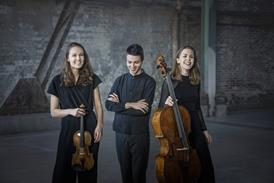
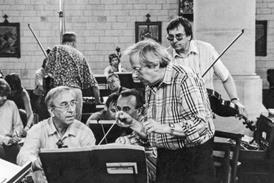
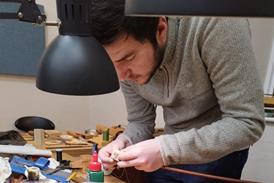
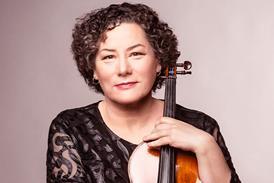
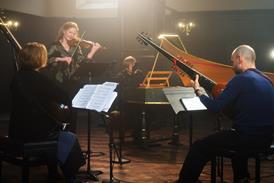
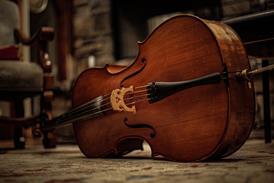




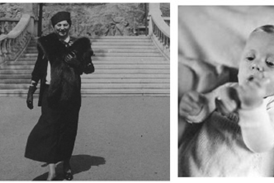
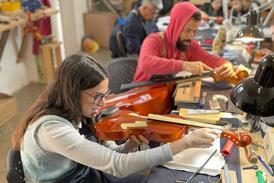
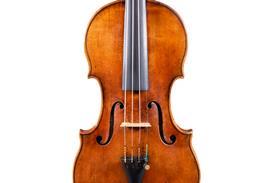
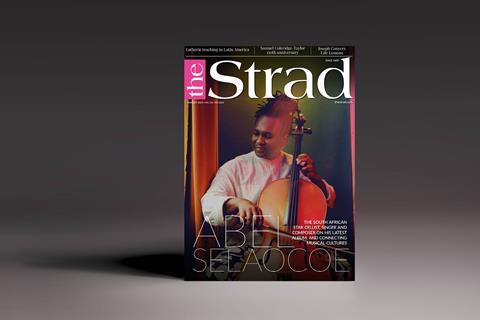
















No comments yet